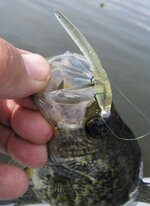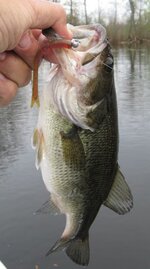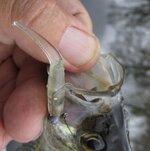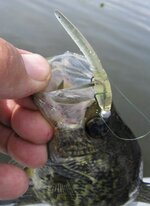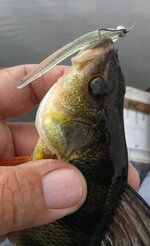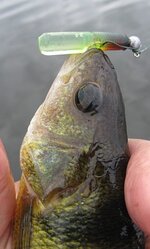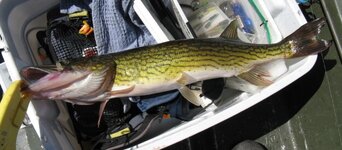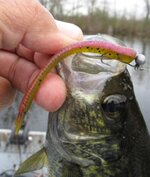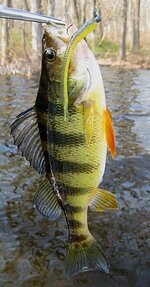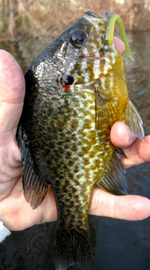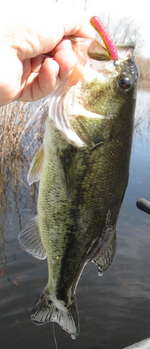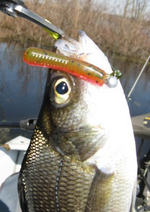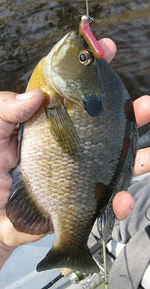SPOONMINNOW
Member
- Joined
- Oct 9, 2016
- Messages
- 265
One lake I've fished for over 35 years has gone through transitions. 3700 grass carp introduced by the homeowners 15 years ago did a number on many species reducing their populations from fewer weeds for young fish to survive. Finally the carp are dying off and fish of all species are coming back! When a private lake offers different species that aren't pressured by the public, it gives a lure maker such as myself opportunities to test lures. Long ago I learned to fish and caught fish on all types of lures in this lake and took that with me to other waters. But as of 10 years ago I don't buy lures anymore but make and test them myself. More important is to dispel certain fishing facts promoted by the media for years.
The latest idea I wanted to test was the use of clear plastic lures. Clear plastic does have color via a background color as well as reflects light from the upper surface and internally.
I made a few clear plastic lures in different shapes and started fishing them last week: straight thin tail, curl tail, spiketail and mini-stick. The clear plastic curl tail like all the other shapes caught bass, white and yellow perch, sunfish, bass, pickerel and crappie.
Curl tail, straight thin tail and modified stick:
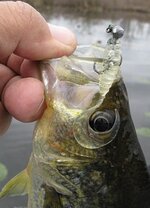



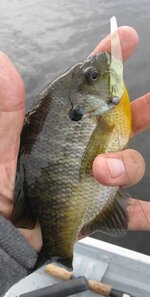
Note how background color was transmitted through the plastic.
Another was a club tail that had a tint of chartreuse and dipped in Spike-It brown dye:
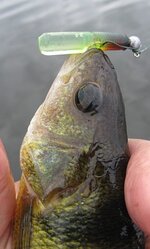
One lure I didn't make that caught different fish species was a tapered plastic worm rigged on a light jig head.
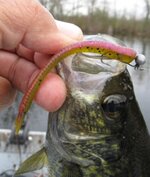
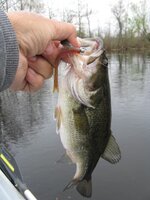
There are about 6 other types that also helped catch over 118 fish yesterday. But one thing that amazes me every year are the pattens that may or may not be present in a body of water. The fish were found in water shallower than 3' - 5' - no deeper. Mixed schools allowed consecutive hook-ups adding to the numbers. This year spring rainfall has been significant allowing wetlands to be flooded more than usual drawing in spawning y. perch and everything else.
Now that the water is going down and lily pads are getting larger outside the wetlands, fish are again schooled in a few areas or hit-or-miss in others such as the solo 2.5 lb bass caught in 3'.
Good thing I discovered a thin wire to attach to my jig heads. Yesterday 6 pickerel would have snapped the line if I hadn't rigged the wire:
(Crappie Magnet tails)

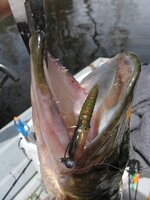
The latest idea I wanted to test was the use of clear plastic lures. Clear plastic does have color via a background color as well as reflects light from the upper surface and internally.
I made a few clear plastic lures in different shapes and started fishing them last week: straight thin tail, curl tail, spiketail and mini-stick. The clear plastic curl tail like all the other shapes caught bass, white and yellow perch, sunfish, bass, pickerel and crappie.
Curl tail, straight thin tail and modified stick:





Note how background color was transmitted through the plastic.
Another was a club tail that had a tint of chartreuse and dipped in Spike-It brown dye:

One lure I didn't make that caught different fish species was a tapered plastic worm rigged on a light jig head.


There are about 6 other types that also helped catch over 118 fish yesterday. But one thing that amazes me every year are the pattens that may or may not be present in a body of water. The fish were found in water shallower than 3' - 5' - no deeper. Mixed schools allowed consecutive hook-ups adding to the numbers. This year spring rainfall has been significant allowing wetlands to be flooded more than usual drawing in spawning y. perch and everything else.
Now that the water is going down and lily pads are getting larger outside the wetlands, fish are again schooled in a few areas or hit-or-miss in others such as the solo 2.5 lb bass caught in 3'.
Good thing I discovered a thin wire to attach to my jig heads. Yesterday 6 pickerel would have snapped the line if I hadn't rigged the wire:
(Crappie Magnet tails)


Attachments
Last edited:

